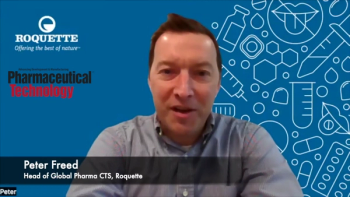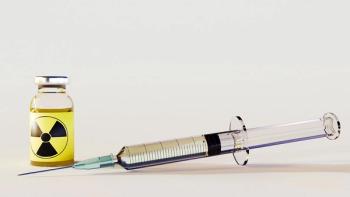
Pharmaceutical Technology Europe
- Pharmaceutical Technology Europe-12-01-2003
- Volume 15
- Issue 12
The Hidden Economic of Calibration Management
The importance of calibrating instruments used in manufacturing processes is well known, particularly for highly regulated industries such as pharmaceutical production. This article discusses software applications used to support calibration management, and the potential economic gain to be had by replacing a standalone software application with a capable enterprise system.
Instrument calibration is an essential process in the pharmaceutical industry. The need to comply with good manufacturing practices (GMPs) and other procedures is well documented and globally accepted. The US Food and Drug Administration (FDA) regulations require good and thoroughly applied calibration management; several chapters of 21 CFR Part 11 detail the calibration processes and how pharmaceutical manufacturers should deal with them.
In manufacturing processes, calibration management is often implemented by quality assurance (QA) departments as a standalone operation, using standalone software tools. This is probably because calibration is a complex process and tends to be triggered from QA/QC (quality control) requirements. However, calibration can also be considered as an integral part of asset management and maintenance; if handled and managed accordingly, it can bring economic value to the company. This is because
- choosing the right system strategy can reduce information technology (IT) expenses
- functional process engineering (or re-engineering) will increase overall efficiency
- implementing a risk-based approach to calibration management means calibration efforts can be decreased while still complying with external regulations.
In today's tier one companies, most of the installed software integrates enterprise-wide business processes. For example, enterprise resource planning (ERP) systems deal with a variety of administrative processes such as accounting, financial management, production planning, human resources and fixed financial assets. Maintenance management is not normally part of the scope of the average ERP as it focusses on financial rather than physical asset management. Also, asset maintenance requirements are often not adequately supported by ERP software.
At the same time, enterprise asset management (EAM) systems cover the technical management of a company's physical assets. Typical business processes implemented in EAMs are asset life cycle management, asset performance, maintenance, inspections, materials management for maintenance repair and operations (MRO) parts, and procurement of parts and services. During the last few years, more and more analytical capability has been added to these systems so they have developed into asset performance management (APM) tools.
Interestingly, in many global companies, a critical business process such as calibration management is often supported by a standalone software tool, which may not be in accordance with the global IT strategy of the company. The reason for this is the lack of calibration capability in many EAMs, as well as the relative autonomy of QA/QC departments when choosing an application to support their activities. If they are the only benefactors of the application, they will choose the best-of-breed package most suitable for their activities.
Total cost of ownership
Nowadays, with the declining profitability of manufacturing, ever increasing competition and other market factors, most companies are having to increase efficiency and find greater cost savings. IT management, personified by the chief information officer (CIO), demands Internet/ Intranet-based applications, enterprise connectivity and total transparency of data. Web-based applications have many advantages compared with workstation applications. Because of their centralized nature, administration is more efficient. One of the main key performance indicators (KPIs) for a CIO is the total cost of ownership (TCO) of installed applications. This cost is calculated from the aggregate costs of owning and maintaining software, not from the cost of acquiring it. The TCO, therefore, includes hardware, software, support, system administration and backup.
If the number of installed software applications can be reduced, less expertise is needed. As this expertise is expensive and often external, this is already a significant financial improvement. Additionally, centralizing applications by using a web architecture means that support engineers do not have to work on individual computers. The applications run on web servers and are only accessible to the end-user through the chosen internet browser, thus further reducing TCO.
System requirements
The decision the market and the software development community jointly have to make is whether an enterprise calibration management (ECM) system should be developed, or whether the calibration process should be included in the functionality of existing enterprise systems. First, the requirements of such a calibration system have to be defined.
Apart from the standard calibration functionality (instrument and instrument loop definition, calibration schedules, algorithms, data entry, and specific report output and graphical analyses) it should be possible to include functions such as stock management of instruments and bill-of-materials, purchasing of instruments, return on asset analyses, and maintenance and operational KPIs. Reports and analyses must include calibration history overviews, reference standard traceability and performance analysis of technicians and specifications. Additionally, there should be a report generator for user-defined reports and a workflow engine to increase day-to-day efficiency.
The system's architecture should be state-of-the-art and web-based to provide functionality to a variety of users without dramatically increasing TCO, as discussed earlier. All functionality must be available through an intuitive user interface, accessible through the browser.
Although some of these required functions are available in the average ERP (mainly the materials
management and procurement part), it may be more logical to incorporate the calibration management activities into the EAM. In fact, many calibration functional requirements are already covered by maintenance management functions. Examples include instrument life cycle and configuration management, job scheduling (periodical and ad hoc), inspection feedback capability, flexible reporting, 21 CFR Part 11 compliance, and revision control of standard operating procedures (SOPs).
Some major EAM vendors offer risk-based inspection (RBI) capability, and this could also be applied to calibration. This would result in additional insights that could be implemented in the calibration process. For example, based on historical calibration results, the likelihood of future deviations can be determined, and changes to the calibration interval can be implemented. These changes must, of course, be subjected to revision control that satisfies GMP, 21 CFR Part 11 and other regulations. Therefore, only tier one EAM vendors, who have the required development budget and focus on asset management to maintain software adhering to these standards, can be assumed to have compliant software. Additionally, EAM applications are more geared towards optimizing cost-effectiveness in day-to-day operations than are standalone calibration systems, which aim to provide best-of-breed calibration functionality.
Flexible EAM
The challenge is to find an EAM system that supports all the asset management advantages as well as the additional calibration requirements. Some pharmaceutical companies have already realized the advantages of combining calibration and preventive maintenance (PM) within one EAM application. They have lowered the TCO by decreasing the number of IT applications required. Also, they are reaping the additional benefits of applying asset life cycle management and APM on their laboratory instruments. For current "wall-to-wall" ERP users, this might mean implementing additional EAM software. Although this may sound risky from an IT perspective, the true EAM vendors have long implemented world-class integration capabilities that make use of business adapters and keep integration and upgrade problems to a minimum.
In conclusion, there is no need to develop an ECM system. The required functionality can be implemented by choosing the right EAM system. If the system of choice is sufficiently flexible, calibration can be implemented next to preventive maintenance, and all asset management advantages will apply to the instruments as well. The efficiency of the calibration department can be enhanced by streamlining the instrument management with materials management, purchasing and general asset management of the rest of the plant. Also, by eliminating standalone systems, the TCO for the IT department will be improved.
Articles in this issue
almost 22 years ago
Drug Pricing Concerns Shape Policy Decisionsalmost 22 years ago
Validating Computerized Systemsalmost 22 years ago
The Decline of Six Sigmaalmost 22 years ago
Dropping Method Solution for Formulating Solid DispersionsNewsletter
Get the essential updates shaping the future of pharma manufacturing and compliance—subscribe today to Pharmaceutical Technology and never miss a breakthrough.





